I’ll be spending the next five months in a remote location for work, and both the Windows 7 and Ubuntu partitions on my laptop have rebelled against the cross-country move by refusing to connect to the internet at anything other than molasses-quick speeds. My iPad works fine, however, so I’ll be iPadding it up for the near future.
This means I’ll be dependent on an app called Comixology for scans. Scans like this one:
That’s from a comic book I already paid $3.99 for when it first came out four years ago. Cost of the digital version? $2.99. Now, I’m not on here to bitch about the fact that I have to re-pay for something I already own. I’m here to bitch about the price.
DC, Marvel, et al: use the iTunes model and charge $0.99 for back issues, $1.29 if it’s a comic book you can’t find easily in real life. Price newer issues whatever the hell you want, since it’ll encourage people to go out and seek out paper copies and they can feel like they’re getting their money’s worth. But $2.99?!? Seriously? There’s a big part of me that wants to scream “Get f**ked, you greedy pricks,” but I won’t. I’m classy.
In DC’s defense, most back issues are $1.99, and some are $0.99 and plenty of first issues are free, but for the most part it’s a solid $1.99 for books you can pick up from your LCS for a buck (or less) and new issues (and some older titles like Blackest Night) are $2.99-$4.99. Aside from labor, digital comics are relatively inexpensive to reproduce and distribute, and I understand the economy’s in the toilet, but publishers: make them $0.99 because a) you can afford to and b) they’ll start flying off the (virtual) shelves.
That said: digital comics on Comixology have one advantage their paper brethren don’t: Guided View™ technology. Tap on a panel and it fills the screen, tap again and the panels swipe, zoom, pan out, and do all manner of fancy camera tricks that actually enhance the experience of reading the damn things. It’s no substitute for a paper copy – and the thrill-inducing effect you get from reading a physical copy of Before Watchmen: Dr. Manhattan #4 would be impossible to recreate on a computer – but it’s still pretty neat, and takes the edge off getting the shakedown from Time-Warner yet again.
Moving on.
I won’t dwell too much on the early days of Ralph Dibny/Elongated Man. The two-page recap in 52 #13 covers it fairly well:
Ralph was the class clown of the Justice League back in the late ’80s and early ’90s, if only because it’s hard to take seriously a man whose superpower is to stretch parts of his body (the one part of Frank Miller’s The Dark Knight Strikes Again that I find believable is that these sorts of powers would drive someone like Plastic Man to perversion and insanity).
He went from comic relief to heavy hitter with 2004’s Identity Crisis, a landmark series in which Brad Meltzer had Ralph’s wife Sue raped and murdered, blew up Firestorm, led Batman to develop OMAC after realizing Zatanna had been mind-wiping people (including himself) for years, and killed the third Robin (Tim Drake’s) father Jack.
Identity Crisis, aside from continuing DC’s mind-boggling tradition of killing off fan favourites and leaving the dullards alive, was either a clever inversion of the Women in Refrigerators trope (a woman was killed to get the attention of a male character, but it turns out the killer is a woman) or the most Women in Refrigerators-y moment in all of comics history (not only does a woman get killed, she’s also raped, and her killer is a man-hungry psychotic ex-wife). Hey, did I mention Sue was pregnant at the time of her horrific murder?
The fun times didn’t end there, however – the Infinite Crisis follow-up 52 introduced one of the most infamous moments in recent memory: Wicker Sue. Because Ralph just hadn’t suffered enough, a resurrection cult stapled a photo of his wife’s face to a female body made of wicker in an attempt to bring her back to life. And she sort of does, in as creepy a manner as possible:
And then Ralph ends up going nuts and cradling her charred “corpse” beneath a bridge like some sort of lunatic troll:
Later issues of 52 reveal that Sue’s implausible “return” was actually plain-old magic, and Ralph was just playing along, but dang was it convincing(ly horrifying) at the time. Ralph eventually dies battling Felix Faust but in death is reunited with Sue, and the series ends on an up note as the two of them appear as ghost detectives:
Pretty sweet, if you ignore all the awful crap that had happened to these two leading up to this moment. (“Oh good, he finally died,” readers of 52 remarked between audible, empathetic sighs of relief.)
Oh, but there’s more: audiences got to see Ralph and Sue back in action in 2009…when zombie versions of them bludgeoned and stabbed their former friends Hawkman and Hawkgirl to death in the opening issue of Blackest Night:
Yeesh. These two can’t catch a break.
Fast forward to the final issue of the series, when a dozen heroes and villains are resurrected by the power of the White Lantern. Among them? Not Ralph and Sue Dibny. Watch the Flash as he says out loud what everyone reading Blackest Night is thinking:
That’s right, an absolute nobody like Hawk (of Hawk and Dove) is walking the earth again but Ralph and Sue Dibny are doomed to slowly spin in their graves while Osiris whimpers his way into one of the worst incarnations of the Teen Titans this side of Devin Grayson.
Mercifully, the Dibnys have yet to make an appearance in the New 52.

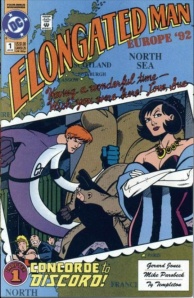


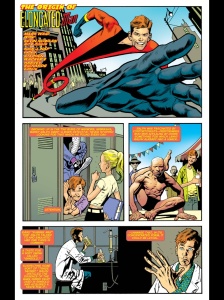
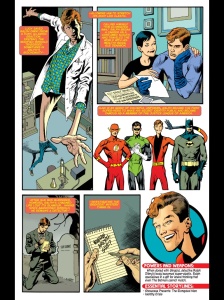
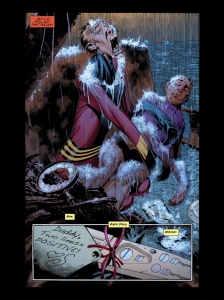
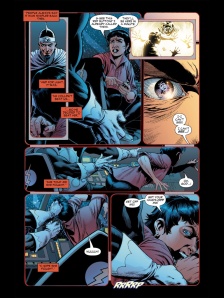
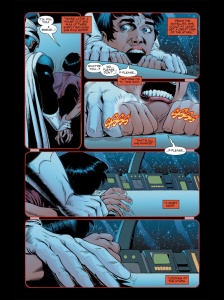
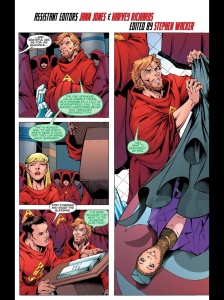

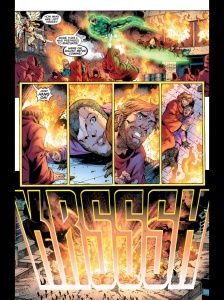

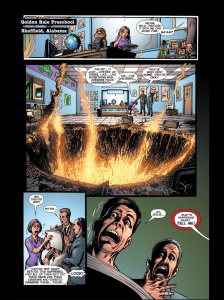
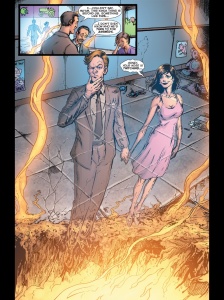
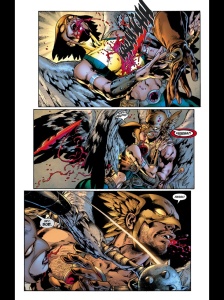
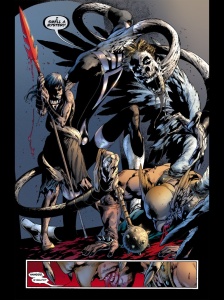
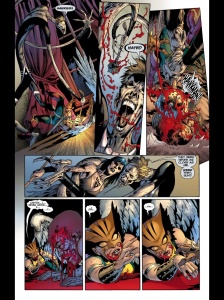
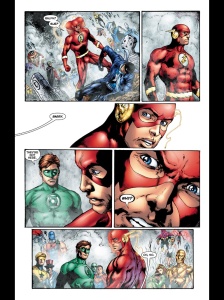
I’m one of those readers who really liked what DC did with the Dibnys in Identity Crisis and 52. I didn’t care about any of them before and that changed. Ralph became such an interesting character in 52, even better than Batman who became a paranoid maniac.
Excellent point. I never really cared for Superboy prior to his death in Infinite Crisis, after which I found him a pretty fascinating character.
I always liked the levity provided by the Dibnys, though. Some of the first books I owned when I started reading comics were the Elongated Man miniseries and the entirety of the Justice League ‘Breakdowns’ crossover. So when Identity Crisis and 52 happened, I was pretty devastated (as much as one can be for fictional characters).
disagree
Not every hero should be a tortured maniac
some should be light hear-ted and fun
don’t you miss heroes who actually step out of their uniforms
I do
I like how the first part is complaining about the price. It is really relavant to everything happening today.
I’m not buying digital (mainly because I don’t have any digital advices to buy digital comics on), but I agree with you. I think all comics should be like $0.99 and new comics should be $1.99.
I am tired of seeing the Dibny’s be treated like crap by DC. Elongated Man and Sue were never my favorite characters, but I don’t like seeing them being treated like crap. I really don’t like seeing any characters die. Keep the characters alive and make some interesting stories. I don’t think killing characters make for any fun or interesting stories.
Ralph didn’t join the league during the late 80s. He joined during the early 70s and left during the mid 90s. Up until that point he had one of the longest memberships.
I didn’t make the connection, but perhaps the idea of Brightest day was to keep the Dibnys as ghosts. That’s not much of a problem. The problem is that they appeared in just two or three stories as ghosts.
The New 52 revival in Secret Six was ok. While they didn’t solve a mystery, their role was a lot like Nick and Nora Charles, taking the Catman and the rest under their wing.
The Dibnys are clear fan favorites with a long history within the DCU, but I feel they have been badly treated after Identity Crisis and then neglectedafter the 52 series.
The big problem with Identity Crisis: it killed off Dr. Watson and then had Inspector Lestrade accidentally figure out the killer while Sherlock Holmes spends the whole story crying. NO! If you kill of the wife of a detective, that detective solves the mystery. END OF STORY.